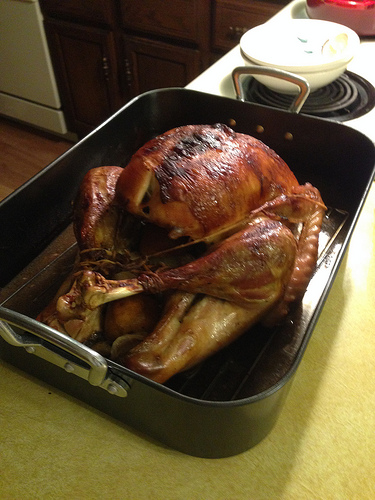This year, I experienced Halloween, Thanksgiving day, and Christmas with my family for the first time since I moved to the US. There were many new things I learned about these holidays, so I’d like to share them with you.
Many Koreans know about Halloween because the young Korean people who had studied in the US started bringing Halloween customs back to South Korea and enjoying Halloween there since the 2000s and the majority of kindergartens have a Halloween costume party these days, but Halloween is still not commonly celebrated in Korea, so it’s very hard to find a person wearing a Halloween costume on the streets on Halloween.
I didn’t know that Halloween started in the US at first. From reading Wikipedia, I learned that Irish immigrants brought their Halloween into the new land and then it has been developed into what we see today. Actually, I didn’t know Halloween is such a big holiday like Christmas, until I saw every big market start to sell big pumpkins at the end of September. Moreover, a Korean also suggested to me that I visit
a pumpkin farm near Portland together. I didn’t think I would buy a pumpkin at that time. Anyway, I took my family there in early October.

I was surprised to see many pumpkins in the field. The pumpkin farm was very fun to walk around. I got on a small train with my daughter lead by a tractor. There were many kinds of farm animals such as ponies, pigs, cows, sheep, and chickens, so my daughter saw them very closely, which made her excited. Every family, including the Korean family, bought pumpkins. Finally, I bought a pumpkin for my daughter and it still rolls around on the living room floor.
On Halloween, my daughter wore a vampire dress and went out with me to get candies and chocolates. I saw many children and their parents wore various costumes walking around. They really enjoyed the day, even some who were adults, so I considered wearing a costume for the next Halloween day. My daughter is also prepared for next Halloween: I already bought her another costume for 50% off!

After Halloween, I noticed that many people started getting ready for Thanksgiving. I I became aware that, like Halloween, Thanksgiving Day also started in the U.S. I thought every Western person enjoyed Thanksgiving day, similar to how Korean people sometimes think all western people are American.
Fortunately, an older Korean couple who have been living in the U.S. for many years invited me to their Thanksgiving dinner. If it wasn't for my friendly daughter, I might not have had the chance to participate in a Thanksgiving feast. While my wife was grocery shopping with my daughter near our apartment one day, she smiled at an elderly Korean couple. They started chatting, and my wife found out that they had lived in the U.S. for many years. They ended up inviting me to their house for Thanksgiving dinner. They prepared a turkey, sweet potatoes, cranberry jam and kimchi and soybean stew. The turkey was really good. I heard that it takes a lot of time to cook a turkey, from marinating to roasting. I would like to thank the couple and hope everything is great with them.

Christmas Day in the U.S. is a bit different although it is also a holiday in Korea. It seemed that every family really enjoyed Christmas day: I saw many houses decked out with lights for Christmas and my colleagues brought Christmas cookies to the office. I also decorated a Christmas tree with ornaments and lights for my daughter, which was my first time to have a Christmas tree at home. My tree is a fake one, but many families seem to buy a real tree. As you may know, it’s very hard to find a real Christmas tree and houses decked with lights in Korea. Usually, churches and department stores are decked with lights, but not private homes. Decorating a Christmas tree is also not common, even for Christians. I also attended the
Portland Christmas tree lighting ceremony in Pioneer Square, which is one of my best memories of Portland. An interesting thing was that nobody around me had attended this ceremony, which for me was like many Seoul citizens never having gone up to the observation deck of the
63 building in Yeouido.
Through experiencing these holidays in Oregon for the first time, I realized that we just know superficial things about how other people live in their countries, and I have resolved to try to learn as much as possible about America and Americans while I live in the U.S.





